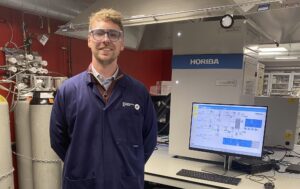A team from The American Chemical Society have devised an innovative solution for real-time air quality monitoring in awkward places.
In this example, the team wanted to test for hydrogen sulfide (H2S), famous for its scent of rotten-eggs. Most commonly encountered in well water and volcanic emissions, it is also a common byproduct of petroleum refineries and wastewater treatment plants.
In addition to its smell, hydrogen sulfide is an irritant and can be toxic at high levels. Most methods to quantify H2S (and other pollutants) rely on ground-based instruments, while expensive devices such as satellites are required to collect measurements at higher altitudes.
The drawbacks with ground-based measuring devices are twofold: firstly, they are usually placed just feet above the ground so making them ineffective at monitoring lighter-than-air emissions. Secondly, they are stationary, meaning contaminants can simply drift away.
Unmanned drones have previously been used by researchers to gather samples in mid-air, but analyses still had to be performed back on the ground, with traditional instruments.
So, to make the use of drone monitoring more effective, Joao Flávio da Silveira Petruci and colleagues set out to create an inexpensive ‘lab-on-a-drone’ that could sample and analyse H2S gas while in the air and report the results in real time.
Using a 3D printer, the team manufactured a custom device that was mounted to the bottom of a commercially available quadcopter drone. It took advantage of a unique chemical reaction between H2S and a green-glowing fluorescein mercuric acetate molecule.
When excited by an onboard blue LED light, the interaction caused a decrease in the green fluorescence intensity, which was detected and quantified. This reaction is highly selective and was not affected by other, interfering gaseous air pollutants.
The team took their drone to a wastewater treatment plant, where it sampled air on the ground, then at around 30 and 65 feet in the air at three different times throughout the day.
The detection device transmitted its results via Bluetooth to a smartphone, allowing for real-time monitoring. In the evening, there was a clear increase in H2S concentration as the drone increased altitude, though it never exceeded the acceptable ambient level. The researchers say that this system could be adapted to detect other pollutants in the future.
Image: Adapted from Analytical Chemistry, 2023, DOI: 10.1021/acs.analchem.3c02719

















Leave a Reply